Miri
-
Tenyok Rimba Community Resort, Long Bedian
Tenyok Rimba Community Resort, Long Bedian in Apoh, Miri, Sarawak boasts many wonderful waterfalls and several that are quite spectacular.
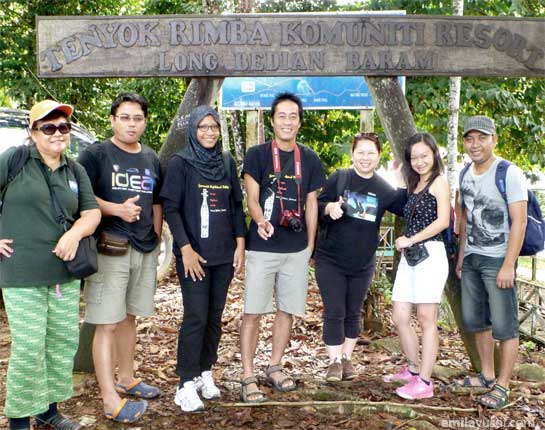
With media team; from left – Alice, Samsul, yours truly, Roland (tour guide), Cath, Nancy and Faiz.There are 7 waterfalls in the vicinity of Tenyok Community Forest namely Nyang Fall, Dancing Fall, Sang Fall, Hornbill Fall, Ba-O Fall, Ipul Fall and Nawan Fall. I get to see 2 of them Nyang Waterfal and Nawan Fall.
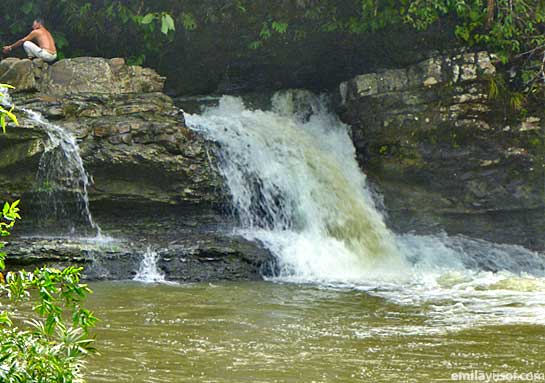
Nyang Fall.From Nyang Fall, it’s about 15 minutes drive half way up the White Cliff to Nawan Fall and a 20-minute hike through the forest. Nawan is beautiful!
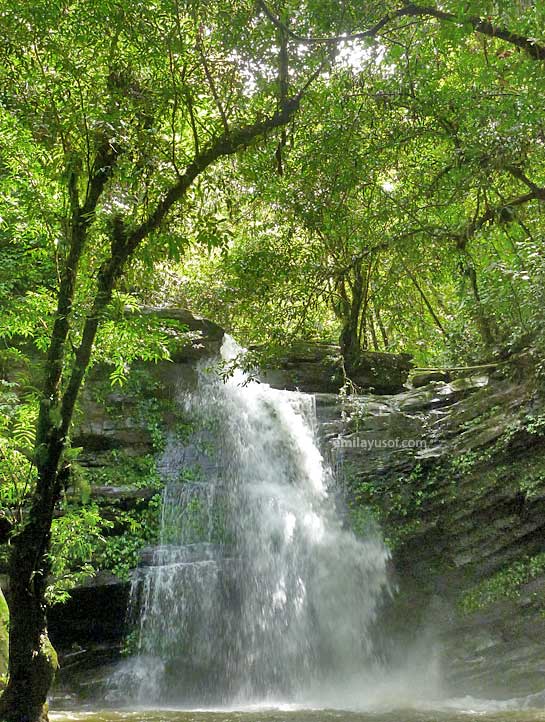
Nawan Fall.The powerful and dramatic rush of the fall produces great deal of mist before the wind blew the mist away enough that I could see them. See my video to see the blown away mist.
The Tenyok Rimba Community Resort is great for those who love nature. Located about 10km from Long Bedian village, the resort offers an amazing view to visitors. It is one of nature’s heritage located in the natural forest on the upper reaches of Sungai Tenyok in the District of Baram. With an area of about 2,400 hectares, the resort is rich in the flora and fauna species.

Shorea macrophylla. A dipterocarp species which is locally known as Engkabang.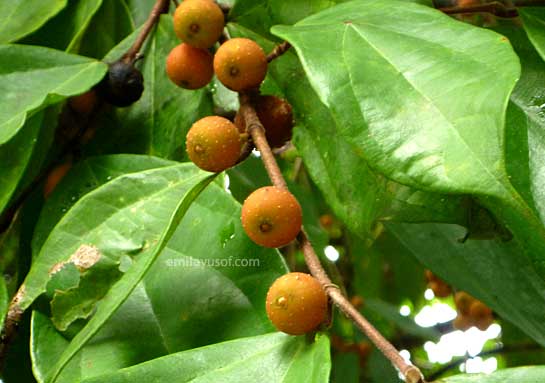
Ara (Ficus sp) has a potassium content.
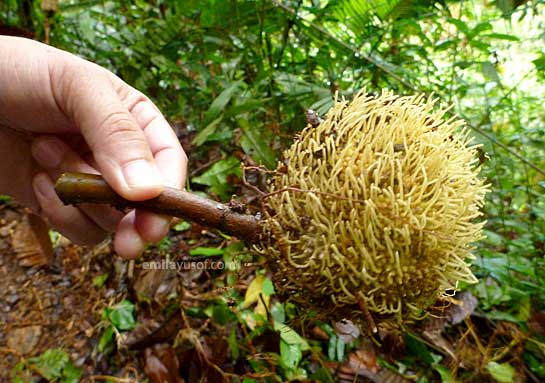
Tarap fruit, closely related to jackfruit.History has it that the area around Sungai Tenyok used to be a logging area in mid 1980s as it was rich with a variety of high quality timber. However, the intense logging activity had resulted in an imbalance in the local ecology, geology and hydrology. In addition, the uncontrolled widespread tree felling had almost resulted in the extinction of various flora and fauna such as animals, birds and other forms of wildlife. In fact, the quality of river was also badly affected. The residents of Long Bedian took steps to preserve the beauty of its flora and fauna and converted the area into a resort. The Tenyok Rimba Community Resort has several chalets and a cafe. The chalets are owned by individuals (they use their own money to build the chalets) and managed by the JKKK Long Bedian.
Here are pictures of the resort:

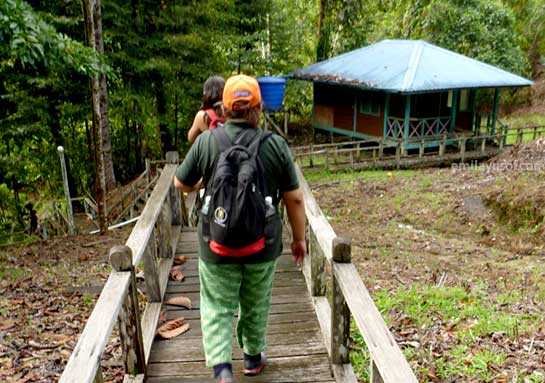
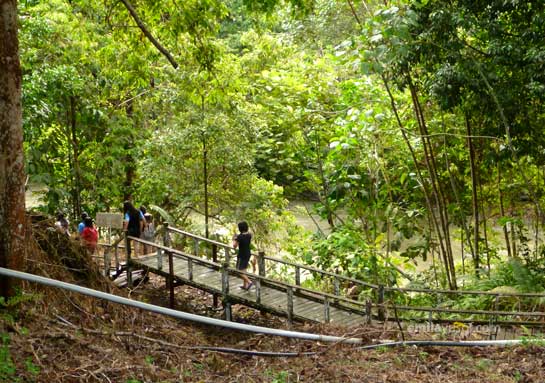
To get here, contact the KJBMB Long Bedian:
Jok Eng Jok 013-8305962
Ding Laing Jok 012-8556118
Ulau Wan 019-4838311 -
Long Bedian, Miri, Sarawak
It is the friendliness of the Kayans that made my visit to Long Bedian so memorable. Language is not a barrier when you have someone there to translate Malay to Kayan, Kayan to Malay. I owed it all to Cath Tipong from Sarawak Tourism Board (STB) for her willingness to do just that.
Although some of the Kayan kids were quite shy and reluctant to respond to my conversation, one thing they’re always good at is smiling. They would run and hide behind anything they could find near them. And then I would hear them giggle. The giggles were enough for me to understand them. The elder kids were quite friendly as they would greet me “Selamat pagi” with a smile.
And of course, the members JKKK Long Bedian, the working committee for the Sarawak Highland Folks Music Festival, were the most friendliest of them all! 🙂
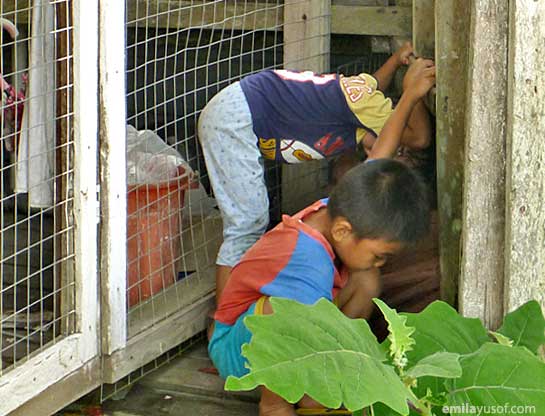
Hiding at the corner of their house.
Gotcha! Nowhere to run, they smiled and giggled. Too cute.I had the honour to meet a Kayan puindo (grandma) at her house, Puyang Emang, 80 years old. She has been living in the longhouse, house number 66, for 20 years.
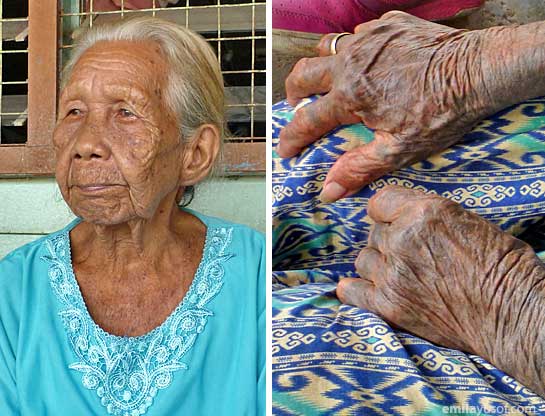 Puyang has tattoos on both her hands since she was 12. For Kayan women, tattoos is considered a form of feminine beauty.
Puyang has tattoos on both her hands since she was 12. For Kayan women, tattoos is considered a form of feminine beauty.The Long Bedian village, home to about 200 houses ( a mix of longhouses and individual houses) and approximately 2,000 people, is situated in the Apoh Tutoh region of the Baram district, Miri division. The majority here is Kayan with a mix of Kelabit, Kenyah, Morek, Penan and other smaller tribes.
According to history, the village was discovered in 1946. The people chose to settle down here because the land is fertile and rich with food source. The Long Bedian village was named after the Bedian River. The Bedian River is named after a durian tree found on the river bank. Bedian is durian in Kayan language.
 Long Bedian river.
Long Bedian river.The Long Bedian community has improved throughout the years. At the end of 1960, the community was introduced to farming, planting coffee, as well as to government policies, for example, attending formal education in national school is compulsory here. The Sekolah Kebangsaan (SK) Long Bedian created history when it was selected by he Ministry of Education, Malaysia beginning January 2012 to start the K-9 Comprehensive Special Model. The model enabled the school to provide education from Year 1 to Form 3. It was one of the Ministry’s strategies in solving problems as well as bridging educational gap among the various ethnics, cultural and socio-economic in the country.
The village is also equipped with a clinic, mini library, wireless internet connection, homestays (one of it is Tapun Homestay – where I stayed for 3 days), badminton court, basketball court and many more.
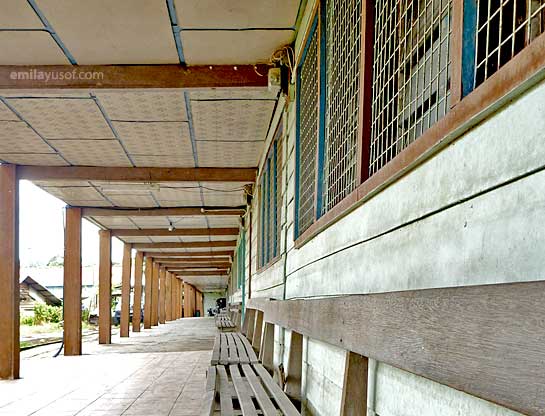
A very long longhouse 🙂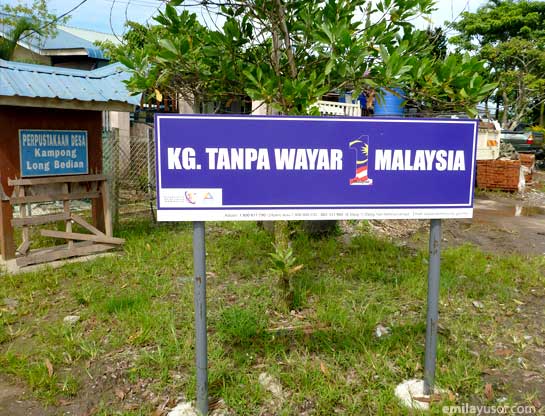
Library and Internet connection.Long Bedian is also the main trading point for daily needs; from food to clothing to hardware to SIM cards! The trading area consists of three rows of shop lots. Built in 1995, the shop lots are rented out to locals to run their business. Tribal crafts can also be found here. I bought some for my keeps.
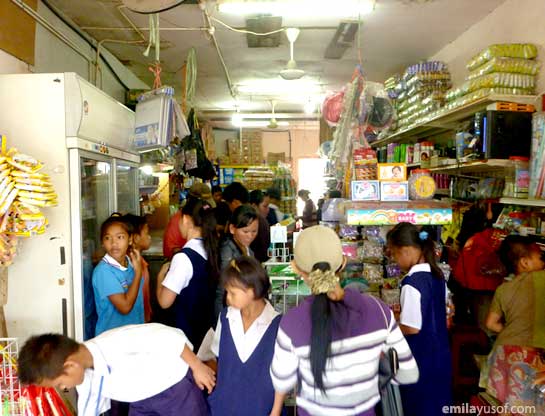
Full house!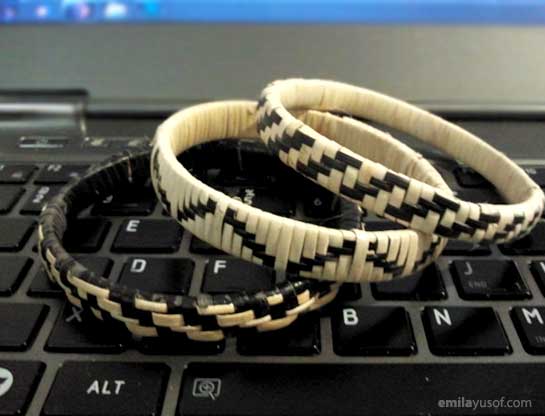
Weaved bangles made by the Penans.So how do you get here? Good question. In my case, I took Malaysia Airlines (MAS) from KL to Miri (2 and a half hours). Later, I took 4WD from Miri to Long Bedian for about 4 hours. It was a bumpy ride but nonetheless ’twas fun!
Alternatively, you can take a twin-otter plane operated by MAS from Miri to Marudi (20 minutes). From Marudi, you can take the express boat to Long Lama (3 hours) and later take the 4WD to Long Bedian (1 hour).
If you need to arrange for ground transportation; you can contact KJBMB Long Bedian also the operator of Tapun Homestay:
Jok Eng Jok 013-8305962
Ding Laing Jok 012-8556118
Ulau Wan 019-4838311 -
Sarawak Highland Folks Music Festival 2012
Attending Sarawak Highland Folks Music Festival 2012 (SHFMF 2012) was a great experience. It enriches me with the knowledge about ethnic groups in Sarawak in terms of culture; emphasizing in the music instruments, not to mention the dance and costume. Really, I have never seen one up-close before. I am truly blessed to be given this chance.
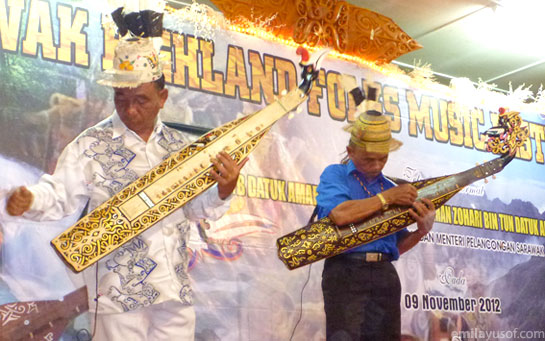
Staged in Long Bedian village situated deep in the tropical rainforest, overlooking Tenyok Mountain, the Sarawak Highland Folks Music Festival 2012 presents some of the finest folk musics from Sarawak. Sarawak Highland Folks Music Festival is the brainchild of YB Senator Lihan Jok (Ahli Dewan Negara, Malaysia) in 2003 when he was the previous ADUN N.67 Telang Usan. In a separate interview at his home, he told that in terms of geography, the Sarawak’s ethnic groups live in the highlands and the way they live there contributed on how they express sadness and enjoyment through their music. This is the way of life that he intended to help revive. While this effort helps the younger generations to appreciate and learn more about folks music, the elders can also take the chance to brush up on their long-forgotten musical skills.
The objective of the festival is to be a platform to conserve folks music and further promote it on international level.
The two-day Sarawak Highland Folks Music Festival was launched on November 9, 2012 in Long Bedian, Miri, Sarawak by YB Dennis Ngau, ADUN N.67 Telang Usan. Speaking during the launch, YB Dennis told that the folks music festival is one very important event as it creates an environment that encourages and nourishes the creative spirit of folk musicians and music lovers whilst attempting to revive traditional forms of musical expression, including dance.

YB Dennis Ngau, ADUN N.67 Telang Usan.Also there to witness the launch was YB Senator Lihan Jok (Ahli Dewan Negara), YBhg Encik Antonio Khati Galis (Residen Bahagian Miri), Mr Humphrey Robert Linggie (representative from Tourism Ministry, Sarawak), Encik Faizal ( representative from Prime Minister’s Department) and Paramount Chiefs from respective ethnic communities.
The festival showcases performances from 8 ethnic groups namely Sape symbolic opening performance by Kumpulan Akademi Sape SMK Long Lama, Long Dance (Datun Julut) by Kenyah community, Iban Gendang (Betabuh), Dak Selingut – Nose flute by Juk Wan, Gendang performance by Persatuan Bisaya Sarawak from Limbang, Tarian Bungan Ejing by Persatuan Berawan Sarawak, Belanggi-Sijinnye-Genang Manah-Ngugor by Dayak Bidayuh National Association Miri , Pagan Tawak & Nyiuan Kayau by Kayan community, Kelabit Dance by Kelabit communit and last but not least Sape music and Tangbut Buluh by the Kayan community. In-between ethnic performances, dances by Sanggar Budaya Miri enliven the festival.
Here is a video of performances during the first day. Am still editing the 2nd one, will upload once done.
During his closing speech on the second day, YB Senator Lihan Jok told that the festival will be organised every two years and with the road system in progress, it is hoped that in years to come, there will be more participations from more ethnic groups.
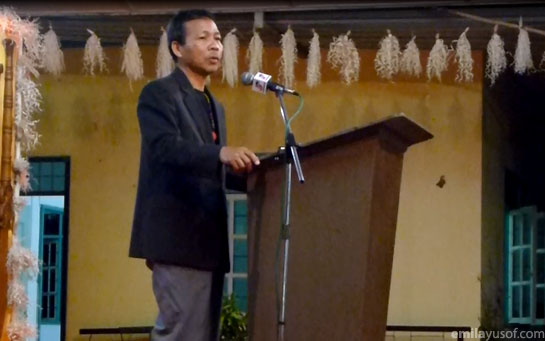
YB Senator Lihan Jok (Ahli Dewan Negara, Malaysia).Here are more photos from the event:

Symbolic opening performance by Kumpulan Akademi Sape SMK Long Lama.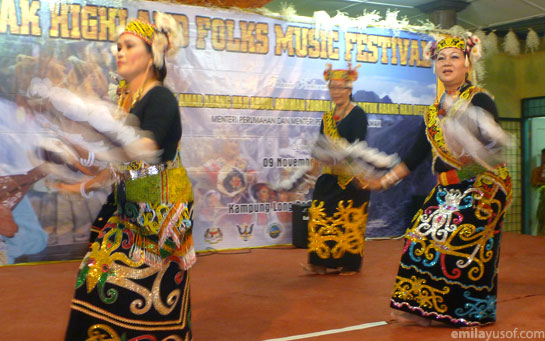
Long Dance (Datun Julut) by Kenyah community.
Dak Selingut – Nose flute by Juk Wan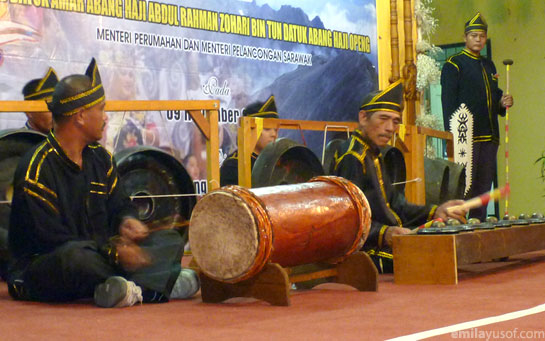
Gendang performance by Persatuan Bisaya Sarawak from Limbang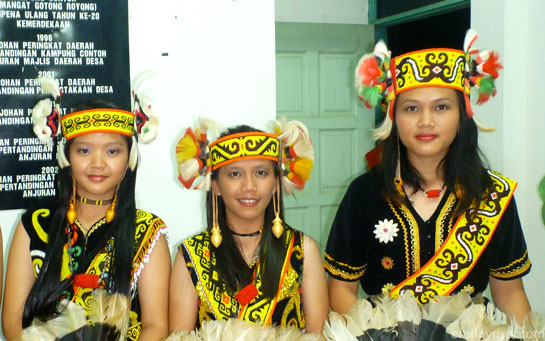
Orang Ulu.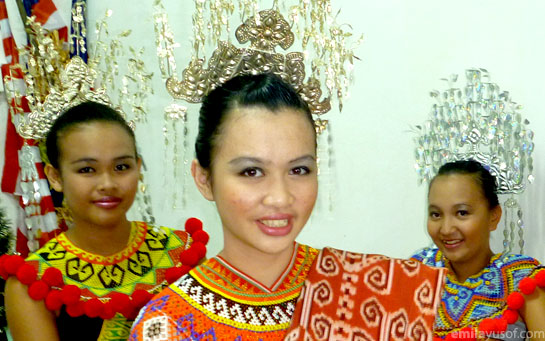
Iban.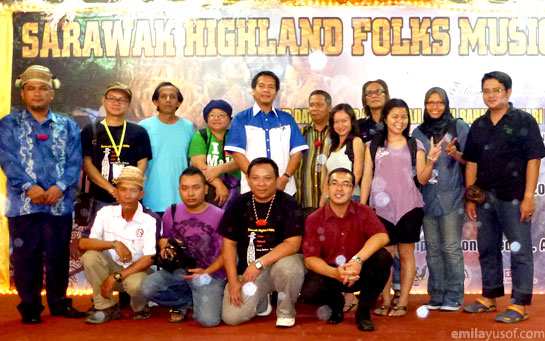
One for the album! -
Loagan Bunut National Park, Miri, Sarawak
It was a long, dusty and bumpy journey to Loagan Bunut but the 130km travelled on a 4WD in 3 hours’ time was worth it. Mother Nature never fails to amaze people who really look forward to enjoy its beauty. I was one of the people along with Nancy, Cath, Roland Gan, a licensed tour guide and Frankie, a Kayan 4WD driver who drove hundred miles from Long Bedian to pick us up at Miri town.

The trip to Loagan Bunut National Park was the excursion trip before heading to Long Bedian in the vicinity of Apoh, Miri for Sarawak Highland Folks Music Festival 2012.
Loagan Bunut National Park is a peat swamp forest with a lake that covers an area of approximately 650 hectares. Total areas of the park gazetted in 1991 are 10,736 hectares.
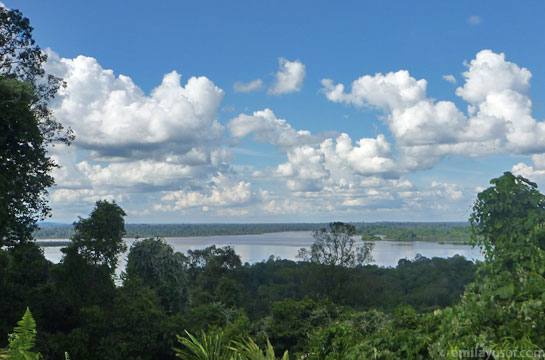
Loagan Bunut National ParkLoagan Bunut is home to about 87 species of trees, 4 species of pitcher plant, 80 species of herbs, 131 species of fungi taxon, 21 species of fish, 231 species of insect, 26 species of reptile, 92 species of bird, 23 species of amphibian and few species of mammalian like Sambar deer, Grey-leaf monkey and flat-headed cat. It is also home to an ethnic group that has been around for 5 generations called Berawan. Berawan has the privilege to collect fish, forest products and hunting under the Native Customary Rights.

The lake.Loagan Bunut is an extra-ordinary lake where water level fluctuates throughout the year, mostly from February to May or June, in response to the fluctuation of water level in Sungai Teru, which is connected to the lake via narrow channel of Sugai Bunut. The water level will go as low as 0.5m up to 3-4m. When it rains, the lake will be filled up again up to the highest water level of 40m. And this is a good time for the Berawan people to scoop up migrating fish using a unique method called Selambau. Selambau is actually a net mounted to a large raft which can be adjusted according to water flow. Main species of fish found here include Bawan, Baung, Betutu and Kaloi. Fish will be kept in a bamboo cage before being transported to fresh market in Lapok or as far as Miri.

Selambau.The boat ride around the lake took us about an hour, skipping some parts of the lake but nonetheless we had the privilege to get to know a local Berawan, Pak Jalin Luta. Pak Jalin, 66 years old, a fisherman, is also operating boat cruise to support his family. Pak Jalin took us to a Berawan burial site for Berawan community with the national park near Bukit Tengah. There are two other sites situated near Sungai Bunut and Sungai Bunan. The burial site in Bukit Tengah is still being used for the burial of high caste Berawans, whereas the commoners are buried at burial site near Sungai Bunut. These sacred totem poles called Lejeng have been in existence for 5 generations, approximately more than 200 years. Lejeng comes in pair and are carved on Belian tree poles that were erected to support the coffin placed above them.
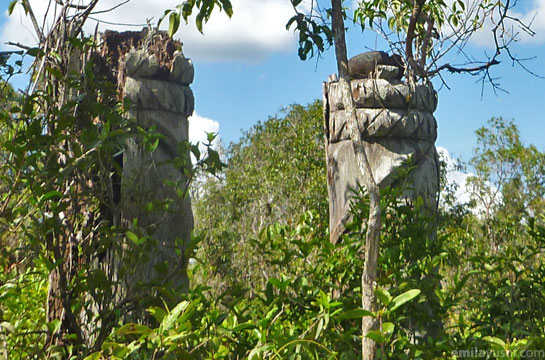
Berawan burial site.We later went to other parts of the lakes where there were chalets. The chalets were not in operation as the main problem here is water. Pipe water is not supplied here and the locals use the lake water for washing and bathing and they will save rain water for cooking. Some visitors did not like the idea of using pumped lake water and rain water and this problem saw the declining number of visitors. However, there is a Forest Hotel near the office that is still taking visitors but please bear in mind that they use pumped water from the lake which is filtered later using traditional method.

If you don’t mind the water condition, they are happy to let you stay. Bring lots of bottled water for your use. Also bring your own food. If you like to have a fish barbeque, let the local Berawans know, they will help you catch fish. Remember that fishing is not allowed for public, only Berawans are allowed to do that.
If using lake water is a problem to you, you can treat it as a day trip. Go early in the morning and come back in the evening. The fee of transportation (4WD for 4 people) is around RM250 per one way. This is not including the fee to the national park which is RM10 for local, RM20 for foreigner. But my suggestion is, since you are already in Miri vicinity; take the chance to proceed to Long Bedian (another 2 hours’ drive) for the night stay. Long Bedian has about 12 homestays, water facilities, shops and restaurants. There is a Muslim food there. Not to mention 8 waterfalls in the area! I’ll cover Long Bedian in another post (will link the URL here later). And after Long Bedian you can even proceed to Gunung Mulu National Park. From Mulu you can take a flight back to Miri. Sounds good? You can contact Roland Gau from Mulu Trekking to customise your adventure trip: 017-8500206/roland@mulutrekking.com.
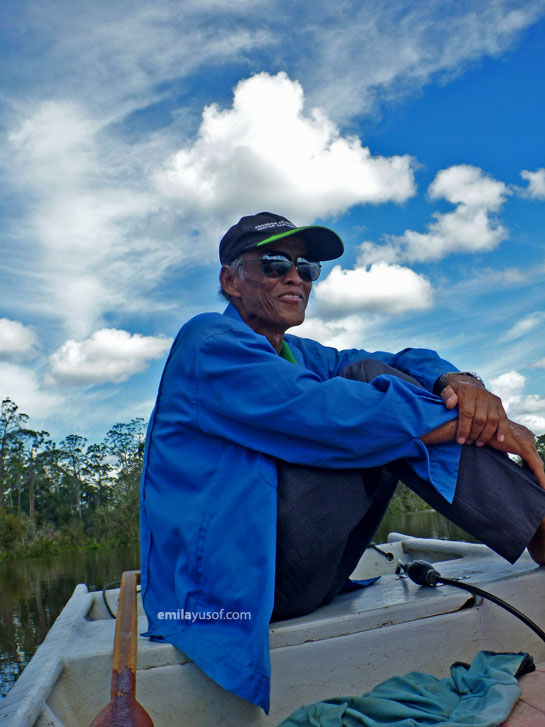
Anyway, other than boat ride at Loagan Bunut National Park, you can also go for trekking. There are 2 trails available here; the 2km Hydrology Trail and 260m Tapang Trail. It is essential to take a local guide. Please enquire about this from the park’s office: 085-775119. For the boat ride, please call Pak Jalin at 014-8968002. Pak Jalin has only one boat to operate and you might have to wait an hour or so, if he is taking other visitors so it will be great if he can plan ahead if you call first. Fee is RM60 for 4 pax.
I might sounds like a travel agency but really, I am not. I want you to go and experience the adventure. Sarawak has a lot to offer in terms of nature, culture and adventure.
Credits to Sarawak Tourism Board for taking me on this trip and frankly, I did not know the existence of Loagan Bunut National Park until they brought me along.
Beauty is in the eye of beholder, if you are a nature lover or nature photographer or simply love to study nature; you will find beauty here in Loagan Bunut National Park. Here are more pictures of the park from a nature lover to another.
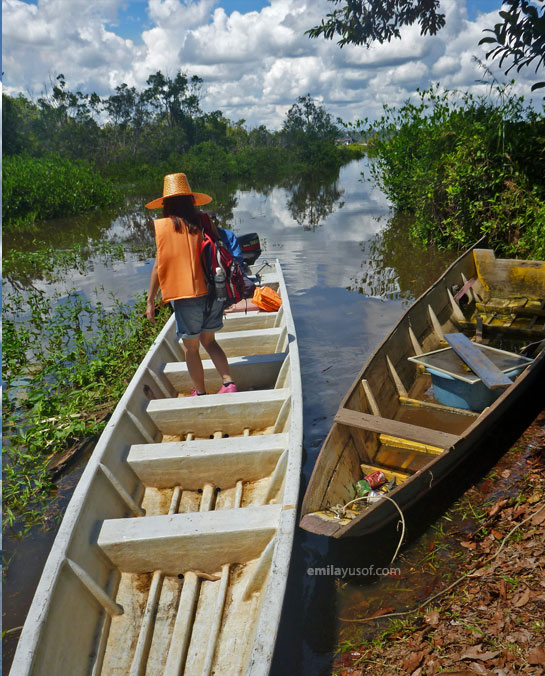

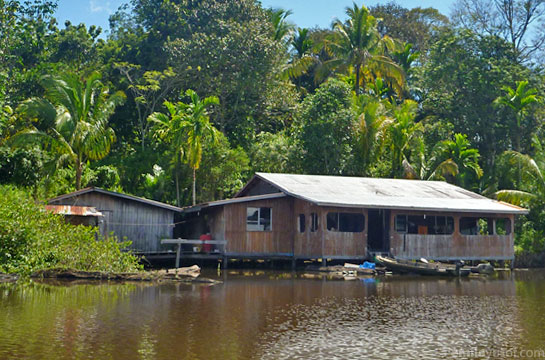
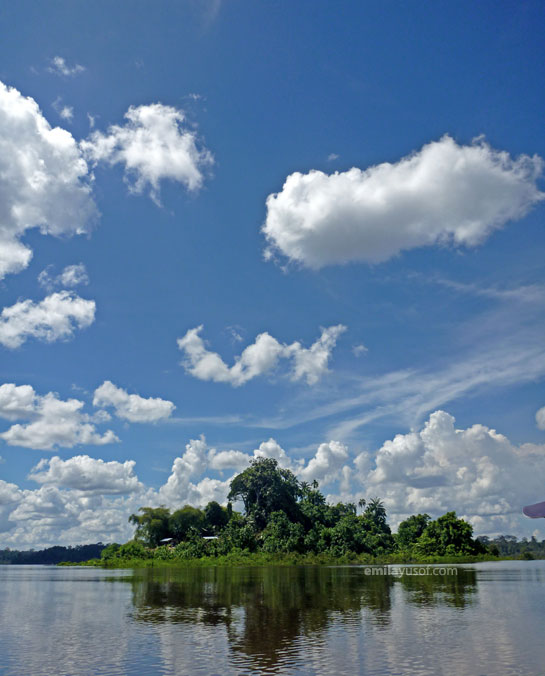

Enjoy!
Emila,
Marudi, Sarawak.
(I’ve written this article in my room at Tapun Homestay, Long Bedian, Apoh, Miri) -
Canada Hill, Miri, Sarawak
“Be down here at 5.30pm, we want you to see the sunset over at Canada Hill,” Cath Tipong from Sarawak Tourism Board (STB) told me the minute I arrived at Mega Hotel, Miri around 4pm.
Geared with my camera, I went to Canada Hill on a van with Cath, Nancy Nais (from Leisure Travel magazine), Rona Sultan, the ground handler (BorneoSeries) and Raymond, the local tour guide.
How did Emila got this opportunity to visit Miri?, you might ask. To cut story short, I was suggested by Malaysia Asia to replace him on this trip as he had already made other travelling plan. I happily agreed to replace him and there I was in Miri for the first time in my life. Thank you so much to Malaysia Asia and STB for the opportunity.
The trip to Canada Hill was short as it only took us about 10 minutes to reach there from the hotel. Canada Hill is a limestone ridge overlooking Miri town and it offers a great view of Miri town as well as oil rigs scattered in the South China Sea. From the hill, the view of sunset is magnificent. The sun sets as early as 6pm here.
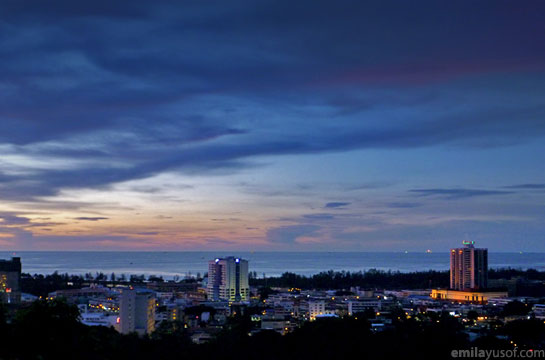
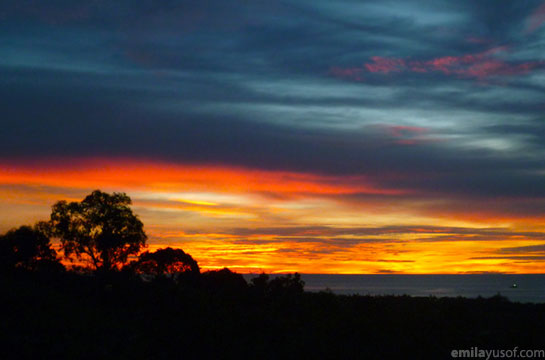
When I admire the wonders of a sunset or the beauty of the moon, my soul expands in the worship of the creator. ~Mahatma GandhiCanada Hill is special because the very first oil well dubbed Oil Well No. 1 is situated here. Known also as the Grand Old Lady, the well has a very important place in Miri’s history as it was here that oil was first struck by Sarawak Shell in 1910. Using cable tool method, the drilling took place in August 10, 1910 and completed in December 22, 1910. Original depth was 452 feet with the last one being at 1096 feet in October 31, 1972. Estimated production is 660,000 barrels for the whole 62 years.
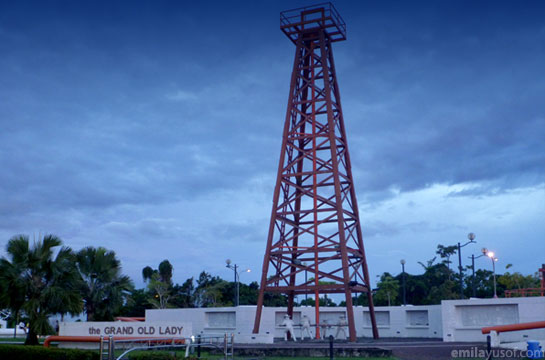
Grand Old Lady – Oil Well No. 1
Statues at the bottom of Grand Old Lady tower.Also situated on the hill is the Petroleum Museum. Currently there is only DinoTrek2 exhibition and by next year the museum will be completed with traces and history and technological development of oil and gas industries in Malaysia.
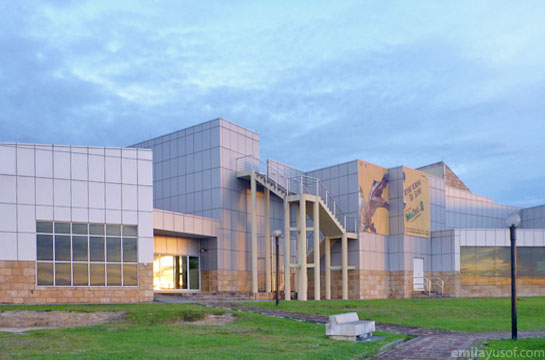
Petroleum Museum.Update: The hill was named Canada Hill to honor a Canadian by the name of McAlpine who was assigned to erect the well. McAlpine completed the 87-meter high wooden tower in August 10, 1910.